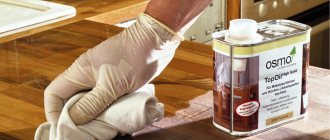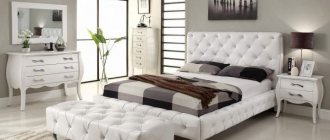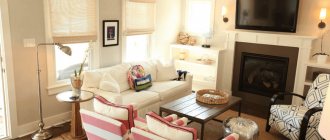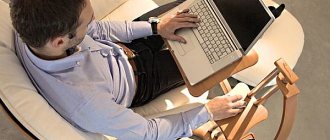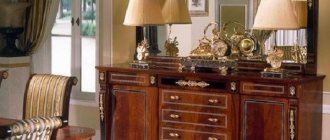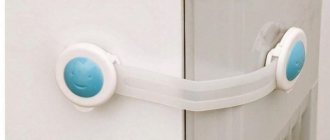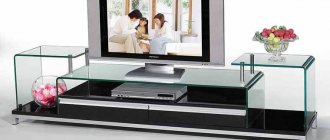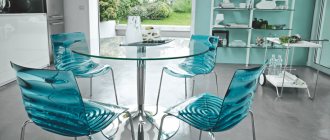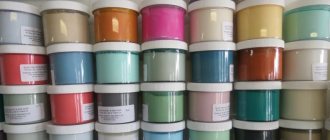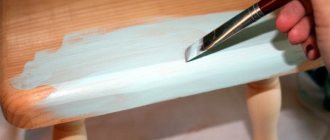We recommend the following types of glue:
- PVA Furniture Lux. Often used in the woodworking industry and in work where it is necessary to achieve strong bonding of parts subject to high dynamic loads. Developed on the basis of aqueous dispersion, it provides a strong hold. This adhesive is effective in joining all types of wood together, including chipboard, and with other materials. Cost: 119 rubles for 900 ml.
- Moment Joiner. Reliable product from the German manufacturer HENKEL. Moisture- and heat-resistant, high-strength and quick-setting adhesive, intended for use during the repair and assembly of furniture made of chipboard, all types of wood, laminate, veneer and many other materials. Gives a transparent adhesive seam. Cost: 124 rubles for 250 ml.
- Krass PVA D3. Special waterproof adhesive for all types of wood, chipboard, fibreboard, veneer, plywood. It is suitable for garden, kitchen furniture, doors, windows and bathroom furniture. Does not contain organic solvents. After drying, it leaves a transparent adhesive line. Cost: 125 rubles per 200 ml.
VIDEO INSTRUCTION
What glue should not be used for chipboards
Never use modified furniture grade PVA or Titebond wood glue. These types of glue are characterized by excessive capillary properties. They create voids inside uneven chipboard sheets, and this can lead to poor adhesion of materials.
Example of work - gluing a chipboard tabletop
Chipboard is often used to make kitchen countertops. Let's look at the order of work.
To work you will need:
- Chipboard sheets;
- Sheet plastic;
- Furniture stapler;
- Scissors;
- Roulette;
- Sealant;
- Manual frezer;
- Screwdriver;
- Jigsaw;
- Level;
- Hammer with rubber tip.
To make a tabletop with a thickness of 28 millimeters or more, as a rule, several thin sheets of chipboard are glued together:
- Before gluing, degrease the surfaces of the boards with isopropyl alcohol;
- Apply glue evenly using a roller or spatula;
- The plates should be pressed under a pressure of 50-80 N/cm square at a temperature of no more than 30 degrees Celsius. Keep under pressure for 8 minutes. After this, stack the slabs and keep them under pressure of 1500 N/cm2 for 24 hours.
If you have a ready-made countertop made of chipboard and you just need to glue several boards together:
- To create an invisible seam to connect the tabletops, it is necessary to mill the panel;
- Make nests in it for lamellas and recesses for fastening parts;
- Clean the end of the tabletop with sandpaper, degrease it and evenly coat it with glue;
- Insert slats and spikes into it for further assembly;
- Do the same with the other glued tabletop;
- Press the panels tightly against each other with their end sides so that the glue comes out of the seam;
- Secure them with a clamp for 30-50 minutes until the glue hardens;
- Then sand the seam between the panels until it is invisible.
- To complete the worktop, add end, corner and connecting strips, as well as front and side profiles.
How to glue furniture.
How to glue furniture? The question is probably not entirely correct, most likely it’s worth thinking about the question of what glue to glue furniture with. There are two answers in this case, the first is to learn to choose the appropriate wood glue yourself, and the second is to listen to the advice of more experienced comrades. This is what we will dedicate our article to, in the first part we will learn how to choose the right adhesive composition, and in the second part we will check with our own hands which of the specimens we have chosen is really capable of gluing wood.
Choosing furniture glue.
Learning how to choose the right glue for furniture is quite simple. The base, chemical composition, all kinds of additives and other details fade into the background if furniture glue does not meet our consumer requirements. Therefore, when choosing an adhesive, we are primarily interested in the consumer properties of the adhesive, namely:
- Availability. Possibility to purchase at your nearest store.
- Toxicity. The smell of solvents, hardeners and other things is harmful to our health.
- Convenient to use. He opened the tube, applied it, and closed the tube.
- It glued really well. (More about this in the second part of our article.)
Unfortunately, we cannot do with consumer selection criteria alone; to obtain a high-quality result, we will have to take into account the following technical characteristics of furniture glue:
- For the tree. In most cases, furniture consists of wood and what is made from it into plywood, fiberboard, chipboard, etc. therefore, on the package with glue it should be written - for wood.
- Transparency. After drying, the glue should not differ from the color of the wood, otherwise the glue line will be noticeable.
- Hardness. For example, epoxy resin-based glue forms a rigid edge at the gluing site, and with further sanding the edge can stand out significantly. Therefore, after drying, the glue must remain sufficiently elastic.
- Vitality. The time from the moment the glue is applied until it sets must be sufficient to assemble furniture consisting of several elements, such as a stool. The optimal lifetime of the glue can be considered 10 minutes.
- Moisture resistance. When using glued furniture in an apartment, this criterion is not necessary to take into account, but for country furniture, the moisture resistance of the glue can be very useful.
In practice, all of the above brought me the following results.
Several suitable examples of glue were selected, as this is necessary for the next part of the article. Perhaps in your case the result of your trip will be different, everything depends on the assortment of the store.
How to glue furniture?
It's time to test the strength of the glue we have chosen. We do not have a specialized laboratory at our disposal, and the result of such tests, expressed in kilograms per square centimeter or something similar, does not mean much to an ordinary person. We have a specific question: does the furniture stick well or so-so? Therefore, we will simply glue and break, whoever lasts longer is the best. So that we are not accused of advertising or something to the contrary, we will rename the wood glue we have chosen. We'll call the one in the small yellow package glue 1, the one in the red package glue 2, and the remaining glue with the green label glue 3. To conduct our experiment, we took three wooden blocks 20 by 50 millimeters and half a meter in length, We sawed them down the middle at an angle of 45 degrees and coated them with glue and waited a day, as this condition was indicated on the label.
Well, then they started breaking. Having clamped one end of a wooden block with a clamp, the opposite end began to be loaded with disks from an ordinary dumbbell (large 2.5 kg, small 1.25 kg).
Glue 1 withstood a load of 5 kilograms, by 7.5 kg. Its gluing strength was not enough. To be fair, it is worth noting that gluing with this glue also caused trouble, so this result did not surprise me.
Glue 2 withstood the maximum load at our disposal (15 kg), and only after changing the test structure did Glue 2 give in. In general, it can be noted that glue 2 showed a worthy option and can be trusted with gluing furniture.
Glue 3 withstood everything we did with it, at certain moments there were fears that the tabletop of our workbench would not withstand it as it began to sag. It was possible to reach the ultimate strength of adhesive 3 only under more severe conditions. The conclusion is obvious, your furniture will break anywhere, but not where you glued it together with glue 3.
If we talk about the price-quality ratio of glue for furniture, then we can say that when using glued furniture in an apartment, glue 2 will be optimal. Glue 3 costs almost twice as much as glue 2, but it offers increased moisture resistance, which is essential in furniture for the dacha. This article about how to glue furniture will be considered complete. Finally, we will only add that today the concepts of wood glue and furniture glue are practically blurred and there is no point in focusing your attention on this.
In this article, we did not set ourselves the goal of underestimating or, on the contrary, overestimating the quality of any glue and we apologize in advance to the manufacturers if this happened.
Types of furniture edges
One of the most popular materials for making furniture is chipboard. Its disadvantage is the unsightly edges that remain when cutting the part. These edges are masked by the furniture edge. It is made from different materials, and accordingly, it has different properties and prices.
You can also get this edge yourself
Paper or melamine edges
The cheapest option is melamine-impregnated paper edges. The paper is taken of high density, impregnated with melamine to increase strength and glued to papyrus paper. Papyrus can be single-layer (cheaper) or double-layer. To prevent the melamine coating from wearing off, everything is covered with a layer of varnish. To make it more convenient to edge the parts, an adhesive composition is applied to the back side of the melamine furniture edge. When working, you just need to slightly warm up this composition and press it well against the end.
Paper or melamine edge is the cheapest, but also the most short-lived option for finishing the ends of furniture
The thickness of paper edge tapes is small - 0.2 mm and 0.4 mm are the most common. There is no point in making it thicker, and it will be expensive.
This type of edges is distinguished by the fact that it bends very well and does not break when bent. But its mechanical strength is very low - the edge quickly wears out. Therefore, if it is used, it is only on those surfaces that are not subject to load. For example, on the back of shelves, table tops, etc.
PVC
Polyvinyl chloride, which has recently become widespread, is also used in the production of edges for furniture. A ribbon of a certain width and thickness is formed from a mass painted in a certain color. Its front surface can be smooth, monochromatic, or it can be textured - with imitation of wood fibers. The number of colors is large, so it’s easy to choose the right one.
PVC furniture edging is the most popular material used by both home craftsmen and professionals. This is due to the relatively low price and good performance properties:
- High mechanical resistance.
- Withstands exposure to chemicals (household chemicals, for example).
- Waterproof material protects the ends of the product from moisture.
- PVC is an elastic material, which allows you to process curved surfaces.
- It can be processed well using simple tools, which allows you to get good results even at home.
Different edge thickness looks different
PVC furniture edging is available in different thicknesses and widths. Thickness - from 0.4 mm to 4 mm, width from 19 mm to 54 mm. The thickness is chosen depending on the expected mechanical load or external appearance, and the width is slightly larger (at least 2-3 mm) than the thickness of the workpiece. There is a furniture PVC edge with an adhesive applied, and there is one without. Both can be glued at home (more on that below).
This type of edge material also has disadvantages: not a very wide temperature range: from -5°C to +45°C. For this reason, furniture cannot be left outside in winter, and when pasting with heat, you must be careful so as not to melt the polymer.
Made from ABS plastic
This polymer does not contain heavy metals and is characterized by high strength and durability. The disadvantage can be considered the high price, therefore it is used extremely rarely, although it has excellent properties:
- It is resistant to high and low temperatures, so when gluing you can use glue with any melting point. Small shrinkage when heated - about 0.3%.
- High mechanical stability.
Several options for edge tape made of ABS plastic
This type of edge can be matte, glossy or semi-gloss. There are also options that imitate various types of wood. In general, this material is more convenient to use and more durable to use.
Veneer edge
Veneer is a thin section of wood, colored and shaped into a strip. This furniture edge is used in production for gluing sections of veneered products. Working with this material requires certain skills, and the material is expensive.
Veneer is not the most popular material for edging
Acrylic edge or 3D
Made from transparent acrylic. A design is applied to the reverse side of the strip. The layer of polymer on top gives it volume, which is why it is called a 3D edge. Used in the production of unusual furniture.
Acrylic gives the picture volume
Which adhesive for chipboard furniture is better?
When choosing custom-made furniture, it is necessary to take into account many factors, in addition to the quality of materials and fittings for future furniture, you must also pay attention to the method by which the edge will be applied to the elements of the product. Particularly important is the edging of furniture that will be used in conditions of high humidity and exposure to high temperatures. The simplest example is the kitchen, which faces moisture, heat, steam and mechanical damage every day. So which edging method is better and can protect your kitchen for many years?
How to fix chipboard
Properly selected furniture adhesive significantly extends the life of the set or its individual elements.
Contents Varieties Properties Application Recommendations for selection. Using this product, you can restore damaged parts, improve the appearance, and return the former functionality of a cabinet, sofa, etc.
In addition, the glue must meet the following requirements:. Another important parameter when purchasing an adhesive is its cost. For small volumes of work, you can purchase a more expensive option.
However, high cost does not always guarantee adequate quality. In this case, it is better to pay attention to the properties of the product and select a composition that is optimally suited for a particular material. There are several types of adhesive mixtures, which differ depending on the purpose.
Each of them has high drying strength. A certain type of adhesive is selected, as a rule, based on its composition. When working with this type of material, you cannot use any other type of adhesive other than PVA. Not only can they be ineffective, but they can also damage the surface. For example, liquid super glue instantly corrodes the fabric base.
Depending on the form of release, the following types of adhesive compositions are presented on the building materials market: Furniture adhesive containing the solvent cyclohexane, acetone, hydrocarbon compounds, etc., quickly hardens due to the evaporation of volatile substances. Water-based products take longer to bond. To ensure maximum strength and reliability of connections, the adhesive joint must be made with a product with an optimal composition.
Ingredients should be selected taking into account the following parameters:. Hot melt adhesive does not contain active volatile solvents. To firmly fix the surfaces, they must be pressed against each other and held for some time until the adhesive seam initially hardens. Reliability of gluing is ensured by the resins, rosin, and synthetic rubber included in the composition. Some options contain a small amount of highly volatile solvents, which reduces the setting time of the mixture. Durable versions of water-based adhesives sometimes require placing the treated surfaces under a press.
This ensures better bonding of the layers and increases the reliability of the adhesive seam. The quality of gluing depends not only on the properties of the adhesive composition, but also on the correct preparation of the surface. For example, porous materials such as plywood, wood, chipboard must be pre-dried and cleaned. A high percentage of moisture can increase the setting period of furniture glue and reduce the strength of the adhesive seam.
Furniture adhesive must be selected not only taking into account the type of material being glued, the load applied, and external conditions. Don't forget about ease of application. With the development of the chemical industry, the range and variety of adhesive mixtures increases. At the same time, the quality of popular and widely used furniture adhesives used for restoration and repair is improving.
When purchasing adhesives for furniture, you should give preference to those options that meet the following requirements: A low value may result in rapid drying and absorption of liquid into the base material.
As a result, the surfaces may not stick together. High density requires quick application, longer curing time. When examining the packaging, you need to pay attention to the manufacturer’s recommendations regarding use on specific surfaces and types of materials.
Following the instructions will help to avoid damage to the layers of furniture during the restoration process. Open menu. Spring Peach wallpaper in the interior The extraordinary comfort of a living room, decorated in a rustic style. The use of decorative bricks in the interior of the hallway. Rating: 5 ratings, average: 4.40 out of 5. Did you like the post?
Share with your friends! What else to read? A respectable and cozy living room in the English style. The extraordinary comfort of a living room decorated in a rustic style. How to choose a countertop for the kitchen? Spring Home design in a modern style or modest luxury. Facades and roofs: color scheme. Sitemap Contacts About us We are on social networks:.
The best polyurethane adhesives for wood
If the adhesive composition requires increased reliability, long-term resistance to mechanical load, resistance to moisture and negative climatic conditions, then it is advisable to use a polyurethane composition. When comparing 7 products, it was determined which one is better. The list contains 3 of them.
Akfix PA370 D4
Akfix PA370 is a ready-to-use 1-component polyurethane product that can reliably connect wood-based objects to metal, concrete, and plastic in the shortest possible time. Effective for repair work on wooden boats due to its immunity to moisture and external factors. It must be remembered that when it hardens, the product will increase slightly in size, improving the quality of the joint.
Polyurethane wood glue has proven itself excellent in carpentry, in the manufacture of furniture frames, doors, and in joining multilayer elements in complex structures. To obtain the strongest possible connection, the ambient temperature cannot be less than +5 degrees, and the elements to be glued are slightly moistened. Undried fragments of the product can be easily removed using acetone. The maximum temperature values at which the seam will not lose its qualities are in the range of -40+100 degrees.
Advantages:
- Convenient use;
- Low viscosity;
- Reliable grip;
- Fast drying;
- Immunity to moisture;
- Heat resistance.
Flaws:
Fire hazard.
Based on reviews, the tool will allow you to create reliable connections. Users note that the temperature range makes it possible to glue any material that is of wooden origin.
Titebond Polyurethane Wood Glue 2300
The best wood adhesive for polyurethane wood, which is a breakthrough in the field of adhesive technology. The composition in question from a US brand occupies one of the leading positions in this segment. The developer was able to maintain a balance between the speed of hardening (45 minutes) and the time of preservation of its qualities (20 minutes).
The product firmly glues all materials of wood origin, from ordinary wood to objects made from wood shavings. The scope of use is not limited to this: metal, plastic, stone and other materials are firmly glued together. It is moisture resistant, however, in conditions of excessive humidity or under water, the resulting units cannot be left. The glue is not afraid of cold, but before use it must be thoroughly warmed up to +12 degrees.
Advantages:
- Fast setting;
- Versatility of use;
- High connection strength;
- Resistance to moisture;
- Environmental friendliness of the material.
Flaws:
Applicable only at +10 degrees.
Users note that the product is suitable for damp rooms, is specific, and does not dissolve in water. Not for use on products that come into contact with food. It foams well, which means it will fill the space between parts. Firmly glues wood to brick.
The best paints for wood
PUR-adhesive Kleiberit 501.0, D4
One of the best universal adhesive compositions is considered to be products from the German brand Kleiberit 501.0. The basis of the product is polyurethane, which gives the material resistance to moisture and resistance to temperature changes. The 1-component composition is easy to use; it can be used to connect 2 wooden elements, as well as other combinations, for example, polyvinyl chloride, mini-slabs, ceramics, concrete, etc.
Operation of the formed units is possible indoors and outdoors, in rain or scorching heat. Excellent gluing quality is confirmed by international standards. The connection hardens completely after 24 hours.
Advantages:
- Ease of operation;
- Short hardening time;
- Elasticity;
- Versatility of use;
- Resistance to aggressive environments;
- Resistant to temperature changes.
Flaws:
- Long drying;
- Pungent aroma.
Reviews from domestic buyers mainly note positive characteristics. This composition is easy to use, will not drip, and the seam will be reliable. However, it is difficult to wash your hands after work; it is necessary to ventilate the room during the gluing process.
Why do we make furniture from plywood?
Main purpose: The adhesive is used in carpentry and furniture production for gluing wood, similar materials plywood, OBS boards, fabrics, leather, glass, ceramics and some plastics. The adhesive is recommended for gluing products used in rooms with high air humidity. Main purpose: Foam rubber adhesive is used when assembling furniture; it is intended for gluing foam rubber, batting, felt, styrofoam, polyurethane foam and other types of padding to wood, plywood, fibreboard, chipboard, cardboard and gluing similar materials together. This furniture adhesive is suitable for elastic joints; for more rigid joints, Mars glue is recommended. From us you can purchase several brands of wood glue and furniture glue, all of which are characterized by the absence or reduced content of solvents and harmful substances. The wood adhesive we offer, Himkontakt-Stolyar, is an aqueous dispersion adhesive and does not contain solvents.
Moisture contents
Chipboard, plywood or natural wood may have higher or lower moisture levels. This always affects grip. The lower the humidity, the better the glue is absorbed into the surface. But it may be absorbed before it hardens.
Choose furniture glue carefully, because its quality determines how long the product will serve you.
Which adhesive for chipboard furniture is better?
The modern furniture industry cannot do without adhesive materials, which are used for:. Furniture glue is also used during restoration work, when there is a need to repair a cabinet, table or stool. We are talking about the use of special adhesive composites that ensure maximum strength of the assembled structure. A wide range of adhesive materials is justified by the specifics of the industry, in which textures of different internal composition and surface are used: natural solid wood, laminated chipboards, plywood, etc. Among the advantages of the commercial offer are a loyal price and timely delivery. To clarify the cooperation algorithm, just contact our representative. The strength and safety of manufactured furniture depends on the quality and reliability of the glue. Professional adhesive materials used in the production of cabinet and upholstered interior accessories must meet the following parameters:.
Famous manufacturers
The production of glue has long been widespread, so many companies are currently engaged in it, usually presenting a whole line of products for each type of surface.
Some well-known manufacturers of furniture glue:
- Henkel is a German company that produces a wide range of products in different directions. Dorus furniture adhesive is distinguished by the absence of toxic substances and the content of only natural ingredients. The product has high adhesion and wear resistance.
- Fantoflex is a domestic company. Specializes in the production of contact adhesive that does not require mixing and has high strength. Production technologies are not much inferior to imported ones. The glue tolerates low temperatures well and does not lose its properties.
- Bostik is a French company that has been producing adhesives for over 120 years. Offers a wide range of furniture adhesives of various compositions, designed for different types of surfaces. All products are of high quality.
Is it possible to plant tomatoes after cucumbers, peppers, in the same place? What is the best time to plant tomatoes? What can you plant tomatoes next to: articles. What can be planted after tomatoes in a greenhouse or in the ground?
Advice! When doing minor repairs to your own furniture, using glue from well-known brands is not necessary. You can purchase regular PVA furniture glue from any domestic manufacturer.
Furniture adhesive: chipboard, plywood, wood
One of the most popular building materials is chipboard. In practice, situations often arise when it is necessary to connect such slabs together with planes using glue. This is done to increase the strength of the finished product or to obtain a small part of the required thickness, without resorting to cutting a whole sheet of chipboard. How to glue chipboard? Of the variety of adhesive compositions produced by modern industry, the following glue is suitable for gluing chipboard: For gluing chipboard, PVA glue, casein and other compounds of animal origin, resorcinol or urea-formaldehyde adhesives, as well as hot-melt glue are suitable.
Features of choosing furniture glue
There are situations when you need to glue one type of material to another type of material. The question arises, what to glue it with? Now there are many different ways of gluing materials, and not only of the same type, such as glass to glass or metal to metal, but also ceramics to plywood, etc. How to glue glass to glass? There are many types of adhesives that allow you to glue glass to glass. Glue for gluing car glass may be suitable for you; there are specialized transparent adhesives for gluing glass.
Paint chipboard furniture
VIDEO ON THE TOPIC: Wood glue. Glue for wood.
Contents: Features of selection Types of glue Application of glue Rating of the best adhesives Preparing and carrying out work Video material. Home furniture, especially those that are used daily, often break down. It may appear scratches, cracks or chips. And in this case, you can do the repairs yourself, without resorting to the help of specialists. This will require a little time and high-quality glue, which can be found in any hardware store. Surely, those who took on such work for the first time had a question: what is the best glue for furniture repair?
How to properly glue an edge to a tabletop with your own hands at home
Laying tiles on OSB, provided that the surface has been prepared and strengthened using the methods described above, is done in the traditional way. Make a mark to find out how many tiles you need.
The sequence of stages of laying tiles on an OSB board in this video
This will also help you think of beautiful geometry and avoid unnecessary trimming. Start laying from the center so that the trim is in the corners, where it can be hidden by thresholds or baseboards.
How to treat the surface → Room decoration → How to choose the right paint → Surface treatment technologies → Leveling and finishing the walls → Selecting and applying a primer → Removal from the surface → Stretch ceilings and technologies → Reviews and testimonials
- If the surface is smooth, use a notched trowel. The tool allows you to apply the same thickness of tile adhesive and remove excess. Installation becomes quick and simple.
- Identical seams between the tiles are achieved using special crosses.
- From time to time you should check the plane with a level or rule.
Expert opinion
Strebizh Viktor Fedorovich, leading construction foreman
Connecting slabs in a corner kitchen should only be done using special screw ties; this is the only reliable way to fix them. If you want to clarify something, please contact me!
Furniture glue
Properly selected furniture adhesive significantly extends the life of the set or its individual elements. Contents Varieties Properties Application Recommendations for selection. Using this product, you can restore damaged parts, improve the appearance, and return the former functionality of a cabinet, sofa, etc. In addition, the glue must meet the following requirements:. Another important parameter when purchasing an adhesive is its cost. For small volumes of work, you can purchase a more expensive option.
How is it better than laminated chipboard, and is it even possible to make furniture from it? Let's figure it out. This smell lingers with you for some time, and it is nothing more than formaldehyde fumes, which is the basis for the glue used to hold together the chips used to make chipboard.
Features of choosing glue intended for furniture, useful tips
When repairing or creating furniture, you need to use numerous fasteners and compounds. Any material used must be of high quality and reliable, since the durability and resistance of a piece of furniture to various factors depends on it. That is why furniture adhesive is selected with special care, as it must be safe, easy to use, fast to harden and resistant to environmental influences.
How to glue an edge to a tabletop at home.
- the presence of supports is a prerequisite. These could be lower storage sections, special columns for a bar counter, etc. The length of the unsupported span should not exceed 0.6 meters (for example, above a washing machine or dishwasher);
- Fastening to the kitchen set is carried out with screws, self-tapping screws, and furniture screws. The distance between fasteners is 0.5 meters. If one of the screws falls out or is broken, the old hole cannot be reused. It is filled with epoxy resin;
- You can get a high-quality edge if you use special sawing machines to cut the slab. It is difficult to get a perfectly even cut by hand;
- a hole for a sink, stove, or other appliances is cut out on site. Transportation of fully prepared slabs is not recommended. The ends are covered with silicone sealants to protect them from water;
- if the tabletop has a complex shape and consists of several individual elements, they are fastened with screw ties. From above, for reliability, the joints are covered with aluminum plates. Another connection option is a euro saw, but this requires good equipment and experience. You won't be able to make straight edges with a jigsaw. The joints will be noticeable.
Purpose
Furniture glue can be used during different processes:
- direct production of interior items. Often people prefer to install environmentally friendly and unique structures created with their own hands in their homes. To do this, a drawing is formed, parts are prepared, and then they are connected with fasteners or glued together using high-quality glue. In this case, it is necessary to take into account what material the product is made of, since the correct choice of adhesive substance depends on this;
- repair of furnishings. Often high-quality models break due to significant impact or other factors. They can be repaired independently in different ways, but often only gluing individual elements is suitable. A special furniture glue is suitable for this. It is recommended to work with it with a special tool, due to which it is possible to apply the substance to the most inaccessible areas of the object.
Using high-quality and reliable furniture glue has many advantages:
- for any material, you can choose a special composition that is ideally suited to the structure and characteristics of the surface, therefore, ideal and reliable bonding of coatings is guaranteed;
- a highly elastic adhesive seam is formed;
- it is advisable to choose a waterproof product that can easily withstand exposure to moisture and does not lose its properties and adhesive parameters;
- high-quality and reliable compositions gain maximum strength in just 6 or 8 hours;
- It’s really easy to use this glue, so anyone without the appropriate experience or specific skills can handle furniture repair.
A significant point is the competent choice of the adhesive substance itself, for which the characteristics of the surfaces to be glued and the operating conditions of the furnishings are taken into account.
What to do if a wooden chair breaks
Broken legs on wooden chairs are the most common problem. First, you need to completely examine the interior element and determine the nature of the damage. Failure may be associated with a violation of the integrity of the structure, or with the loosening of individual elements associated with drying of the glue.
The most common part of chairs that breaks is the legs.
A broken chair can be restored by gluing the torn elements together with special glue.
Selection rules taking into account the furniture material
For any piece of furniture, it is advisable to separately select the optimal adhesive. Any composition has its own individual characteristics and parameters, so for a plastic structure it is advisable to choose a different solution than for a wooden one.
When choosing glue, the following rules are taken into account:
- if you need to work with fabric, foam rubber or leather, then PVA glue is usually chosen;
- the connection of wooden parts is usually carried out using joiner's compound;
- when working with veneer, hot melt adhesive is ideal;
- For manual veneering, animal glue is used, and to use it, you must first melt it in water.
The packaging of any adhesive indicates which surfaces it is ideally suited for, so it is advisable to follow these recommendations from the manufacturer.
In addition to studying the material for furniture production, other factors are additionally taken into account when choosing a mixture:
- the composition should not contain trichloroethane, which is hazardous to health;
- the color should match the color of the furniture;
- the density of the solution should not be less than 1.1 g/cm3;
- The optimal ones are those created on the basis of synthetic elastomers, which better glue different materials, and at the same time do not lead to their destruction in any way.
Thus, if you choose the glue wisely, there will be no problems or difficulties with its intended use.
Types and technical characteristics
Most often, the following types of furniture glue are used to repair furniture made of wood, chipboard or plywood:
- PVA is the most common for this type of work. It has a low price and is capable of reliably gluing fabric, leather and foam rubber to wood. PVA-1 is suitable for indoor work, soluble in water. PVA-2 has moisture-repellent properties and can be used for outdoor furniture, but with constant exposure to water it also breaks down. PVA may leave yellow stains, and this must be taken into account when using.
- Joiner's (or animal) is a durable furniture adhesive designed for joining wooden elements together. To prepare granules, the substance must be dissolved in water and boiled in a special device - a “glue cooker”. This composition is highly durable and does not deteriorate over time. The only drawback is the complex preparation process.
- Contact , containing volatile substances. This furniture adhesive retains its properties for several minutes after application, which allows you to adjust the location of attachment. It is necessary to glue under long-term pressure to achieve maximum effect. The composition is durable and yet elastic. Volatile substances released during setting have an unpleasant, pungent odor.
- Hot-melt adhesive requires the use of a special gun. The substance acquires adhesive properties when heated. After application to the surface it hardens very quickly. This furniture adhesive is most often used for working with veneer.
- Resorcinol and urea-formaldehyde adhesives. Can be one- or two-component. In the first case, the substance is mixed with water, in the second with the included hardener. These are epoxy adhesives; when using them, it is necessary to use protection to avoid damage due to chemical reactions. They have high moisture resistance and are used to fill cracks, as they quickly set and harden.
Application nuances
You should not only choose the adhesive solution wisely, but also have a good understanding of the basic rules for its use, these include:
- before using any solution, carefully study the instructions from the manufacturer, based on which you can determine what material such adhesive is suitable for, as well as how to work with it correctly;
- the composition is studied to ensure the absence of dangerous and toxic substances, since if they are present, then the material must be handled carefully, and it is also not suitable for furniture intended for the home;
- all actions must be carried out either outdoors or in a well-ventilated area, and protective clothing must be worn;
- All surfaces are well cleaned of dust or dirt before gluing. It's also worth making sure they are completely dry;
- most compositions are white or yellow in color, so if you have to work with multi-colored structures, it is recommended to choose a colorless composition;
- The glue should not be applied in a too thick layer, and spread it over the two surfaces to be glued, then carefully connect them and press them tightly together.
If two-component solutions are used, then the material is applied to one surface, and a hardener must be applied to the other, which ensures ideal bond strength. Thus, furniture adhesives come in a variety of forms. They differ in composition, basic characteristics and nuances of use. When choosing, you need to consider what material the interior items are made of. You cannot choose materials for your home that contain hazardous substances. When working with glue, safety precautions must be observed.
Types of PVC edges
The construction market offers a large number of multi-colored finishing materials. The furniture edge not only covers the end surfaces, but is also a decorative element. Each type of edge differs in price, fastening, advantages and disadvantages. Let's look at the most common types of finishing materials.
Melamine (unoflex)
The edge consists of several layers of paper. The top layer is considered decorative, since it contains a pattern that is glued to the backing. There are two types of border - single-layer and multi-layer. Manufacturers produce tape with a thickness of no more than 0.6 mm and a width of 16-55 mm. You can easily glue the edge to the chipboard yourself using an iron. The material is purely environmentally friendly, as it contains no synthetic impurities. It should be noted that due to the insignificant thickness of the tape and paper structure, after 2-2.5 years it loses its aesthetic appearance. Manufacturers produce edges in rolls of 200 megapixels, but in the retail chain they are sold from 1 megapixel. The cost of the tape is low. For example, the price is 1 MP. edges 0.4*19 mm is 10 rubles.
It is not recommended to use melamine edging for kitchen structures. Paper-based edging will not last long. It is recommended to use PVC material.
The highest quality plastic is used for manufacturing. On the reverse side there is a primer - this is a relief pattern, a protector, which promotes better adhesion of the border to the chipboard. The sides and grooves hide the presence of chips. This edging is quite labor-intensive. On edging machines, manufacturers produce PVC tape with a thickness of 0.2 - 10 mm, and the width depends on the thickness of the chipboard sheet, which can be from 22 mm to 54 mm. PVC tape is sold with or without adhesive. The price of edging material depends on its width and thickness. For example, if the edge width is 19 mm and the thickness is 0.5 mm, then the wholesale cost of a 200 MP roll costs 400 rubles. Today, manufacturers have released aluminum, chrome, and steel colored edging onto the market. Gluing edges on chipboard at home is done directly into the sheet, which makes the product durable. To avoid melting the polymer, you need to monitor the temperature, which should not exceed +45°C. The protective functions of the edge material are designed for a minimum of 5-6 years.
It is not recommended to use ethylene vinyl acetate stick in a glue gun. There will not be good adhesion between the edge material and the end. A little physical activity will peel it off from the edge of the product.
ABS (ABS - Acrylonitrile/Butadiene/Styrene).
This is an impact-resistant thermoplastic that retains its appearance for a long time. It is not dangerous when heated and during processing as it does not contain chlorine or heavy metals. The manufacturer produces finishing materials with thicknesses of 0.4 mm, 1 mm, 2 mm. Do-it-yourself edging tape is applied to furniture structures that can withstand low temperatures and high humidity. For internal processing of furniture boxes, edging is done with 0.4 mm, 1 mm tape, and for the front sides, 2 mm thickness is used. It should be taken into account that when heated, the edge may shrink by 0.3%. Edge material comes in a variety of colors with gloss, semi-gloss and matte finishes.
The finishing material can be used to treat a countertop, kitchen or office table, wall shelf and other interior items. In each type of tape material, it should be noted that there is a wide range of colors. To decorate the surface, you can choose a contrasting ribbon.
